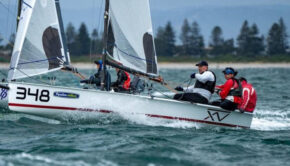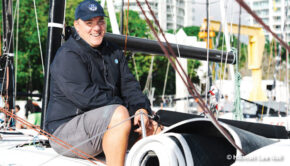Coastal Racing: Rules for success
Published on February 22nd, 2018
Shorter point-to-point races require a different level of preparation and a more assertive approach to tackling the course. In Sailing World magazine, Peter Isler provides five rules for success.
A coastal overnight or distance race is a lot of fun, but can be extremely challenging because of its proximity to shore and its (generally) shorter length. Depending on the racecourse’s twists and turns, the navigator will not get much sleep, and the same is often true for the sailing team.
The shorter race length puts a priority on keeping the crew’s weight on the rail rather than down below in the bunks. In other words, your off-watch crew may be in for a bit of weather-rail snoozing.
Rule No 1: Know before you go
As with any race, preparation is key. Along with the customary study of the weather, current, and general local knowledge that’s part of any race preparation, the navigator should do homework on the availability of wind observations on or near the racecourse.
Racing close to shore means that there’s a better likelihood of a reliable Internet connection through cell phone networks, so a list of “bookmarked” URLs should be put together so these observations (airport, weather buoy, etc.) can be easily tracked during the race. If there’s current information (charts or models) available that too should be part of your briefing.
Another pre-race task is loading the race’s waypoints into the boat’s navigation program. The benefit is two-fold. Firstly, you can start to do route optimization and distribute the results to the crew so they can begin their preparation.
From these studies, the crew will be better able to decide what goes into their duffel bag, plan the provisioning, and organize the quiver of appropriate race sails. It also helps get everybody’s head into the game. Before leaving the dock, you want everyone on the boat familiar with the racecourse, and the tactical possibilities.
In the pre-race meeting the team should review the course on a chart or large format printout. If there are a lot of twists and turns to the course, make a laminate or two of a simple racecourse picture that can be kept up forward, so that it’s not just the afterguard thinking about where the boat is on the course, the next leg, and sail-change considerations.
The goal in a multiple-leg course is for everybody to be thinking at least one leg ahead, which helps prevent last-minute surprises.
Full report… click here.









 We’ll keep your information safe.
We’ll keep your information safe.